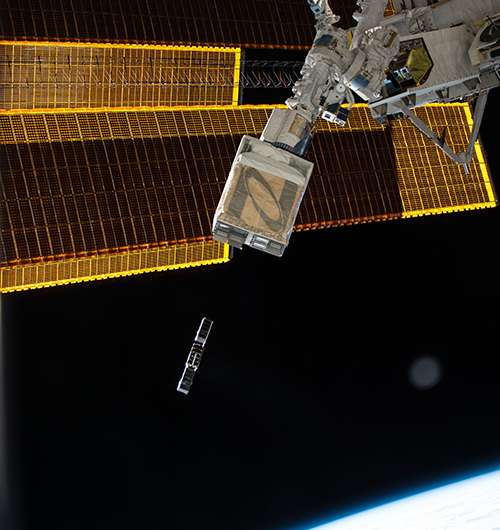Aalto-2 no longer responds to commands

Astronauts at the International Space Station released Aalto-2 into orbit on 25 May. The first satellite signal was detected from Japan on the same day, and later that evening the satellite had already made contact with the Otaniemi ground station.
During the first days, the satellite team confirmed that Aalto-2's antennae and sensors had opened and the energy system charged its batteries. Since Aalto-2 follows the path of the International Space Station, there is only about 10 minutes of control time from Otaniemi each day. Four days after the release, disturbances began to appear in the satellite's signal.
'We saw a few irregularities in beacon, in other words, in the brief regular message sent independently by the satellite. After that, the satellite sent a message indicating that it had re-started and after that the beacon and connection were disrupted,' says Professor Jaan Praks, who leads the student satellite team.
'The students have tried to recreate the same kind of problem in the laboratory with the satellite's engineering model, but without success. Next, the team will try to restore the satellite with a radio telescope. The most likely reason for the problem is the difficult conditions in space, for example, radiation damage to a component or problems in the energy system caused by the low temperature. We haven't ruled out a software problem either.'
If the team cannot restore the connection over the next few weeks, the satellite's scientific measurements will be at risk. However, Praks emphasises that although the loss of connection is a serious setback, the satellite team has made significant progress: the ground station systems work and the team also received data for analysis. The satellite team also gained experience of working in an exceptional situation. In addition, the Aalto-2 project has trained a new generation of Finnish space experts who are already building the next satellites. The impact of Aalto's space programme can be seen in an increased number of start-ups in the space industry.
Big brother will follow at the end of June
Praks is confident with regard to the satellite's big brother, Aalto-1, which will be launched into space at the end of June.
'The Aalto-1 satellite is more complicated and has undergone much more testing than Aalto-2. The Aalto-2 travelled to the space station first and was only released a week later, while Aalto-1 will be launched directly into orbit and will start functioning immediately. Aalto-1's orbit is also a lot closer to the Otaniemi ground station than Aalto-2 orbit, which will make it much easier to operate.'
Aalto-1, which will be launched from India, is a CubeSat type nanosatellite built by students and it will be placed in orbit to test state-or-the-art Finnish technology. The payload includes an imaging spectrometer built by VTT, a radiation monitor jointly constructed by the Universities of Helsinki and Turku and a plasma brake developed by the Finnish Meteorological Institute, which is based on the principle of an electric solar sail and aimed at reducing the amount of space debris.
Provided by Aalto University



















